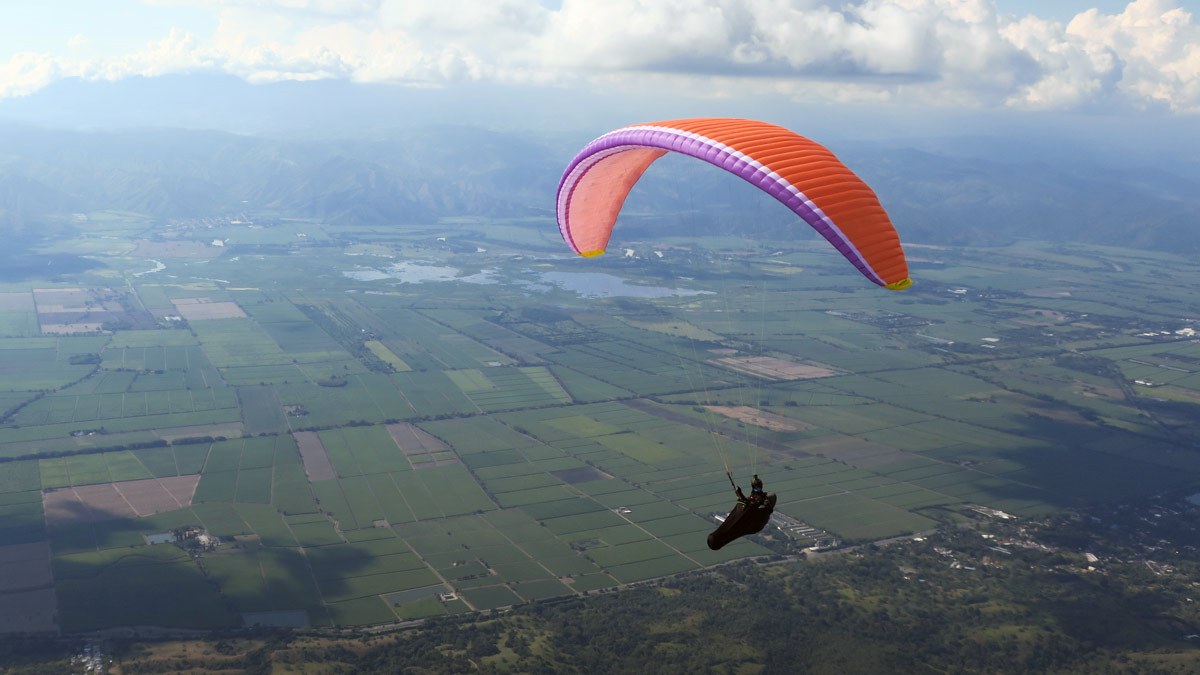
The Nova SECTOR is a mid-level EN-C rated wing (Sports Class) that aims to provide easy handling with stability and good performance. It is a step up from Nova’s popular MENTOR range and is intended for pilots with a few years of flying experience. I flew the S size (80-100kg) at 92kg in Colombia and had a good opportunity to analyse the character in a variety of summer thermic conditions during about 20 hours of XC flying, including some very turbulent air. To develop a more complete feeling, I tested the SECTOR with different harnesses: Ozone Ozium 2, Supair Delight 2 and Advance Lightness 2.
Nova Sector: Construction
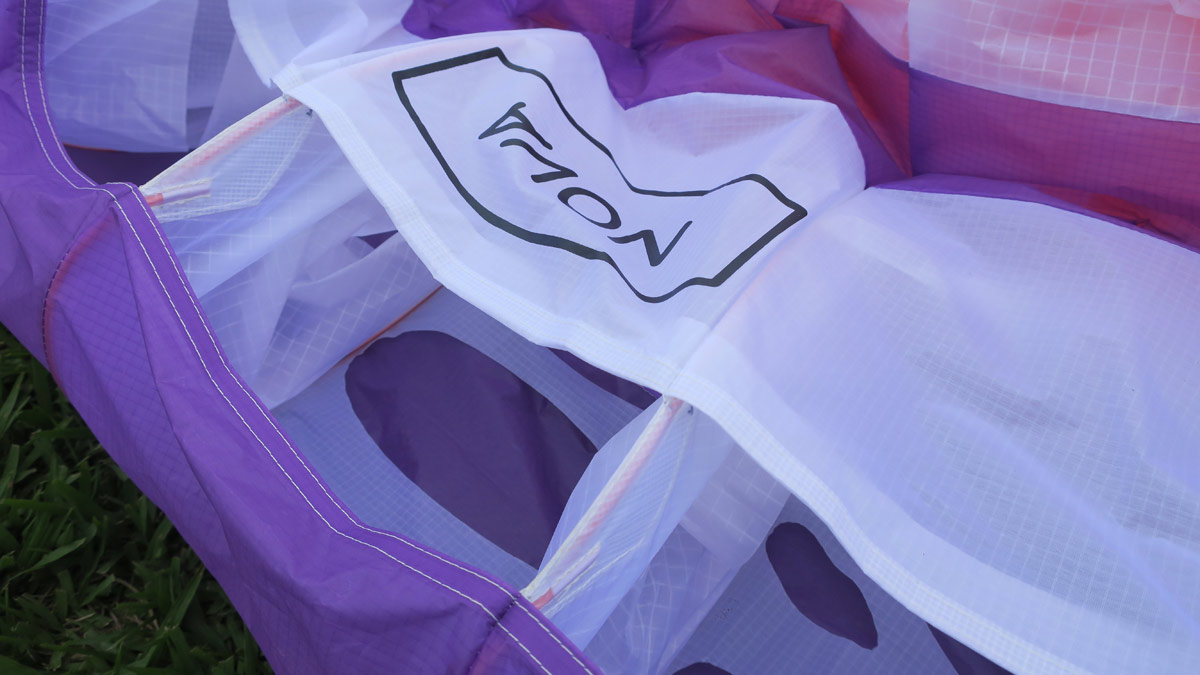
The SECTOR has a mild shark nose, a little step Nova call the Air Scoop. It is nicely shaped with the two overlapping batons running only a short way into the wing. It’s a lightweight glider built for general use which makes it a great option for hike and fly (the S size I flew is only 4.1kg, for a 25m2 wing!)
The slimline risers are easy to handle with excellent build quality, split A’s for big ears, and Ronstan pulleys for the speedbar. Nova have provided clear colour coordination in their rigging. The stabilo line is also marked out in green which helps when trying to remove cravattes. Nova have used maillons with rubber O rings, and metal poppers for the brakes.
As well as being lightweight, the Sector is also has a very low pack volume. This means it fits very perfectly in my new favourite concertina bag, the Gin Concertina Compress Bag. I used the 3.0m size Concertina Compress Bag for the Sector S. The mild shark nose and more flexible battens (nylon rods/wires) are also more conducive to tighter packing (and the method of interleaving the leading edge battens I use for the Concertina Compress Bag).
Nova SECTOR: Launching
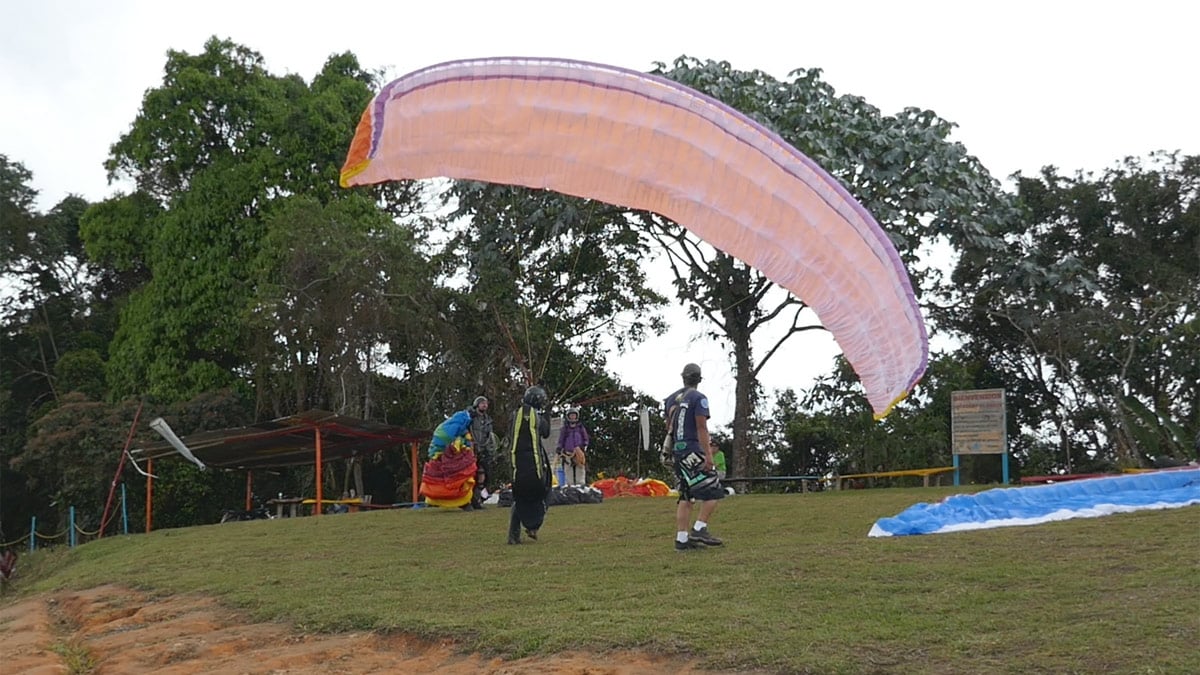
The Sector inflated really well in light conditions, it was even easy to reverse launch with a light tailwind, partly due to the light construction. In stronger conditions it’s a bit more demanding, you need a good feeling on how much to pull the wing up. If you’re too heavy on the brakes it is easy to stall it down or make it snake around, so it demands some finesse with launch technique.
Nova SECTOR: In flight
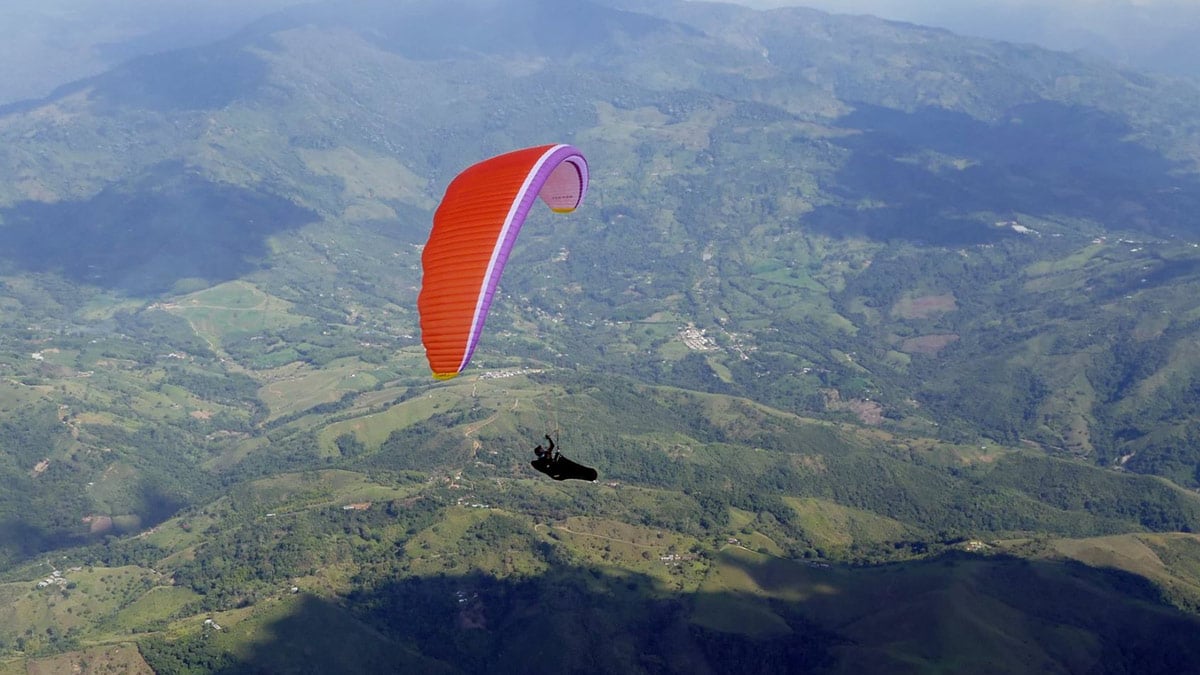
In flight the Sector feels very solid and reassuring even when flying in turbulence and letting the glider move around. It’s what I’d call an ‘easy C’ glider in terms of passive safety and feedback from the wing. However, if you’re flying a MENTOR 5 and feeling that you want a bit more feedback, then the SECTOR will give you that.
It’s nice to thermal, with a precise feeling. It climbs very well with an enhanced ability in the stronger stuff.
I found it very versatile for thermaling: you can turn it flat if needed, but if there’s a strong punchy core you can crank it and bank around pretty quickly, partly due to the low aspect ratio (the lowest in the class at 5.9).
It bites into the thermal and turns with some energy. I found that when hitting a punchy core on glide, I could ease off the bar and quickly crank it around. During most transitions the wing stayed overhead: it didn’t need to be held back, and it didn’t drop back.
Nova SECTOR: At speed
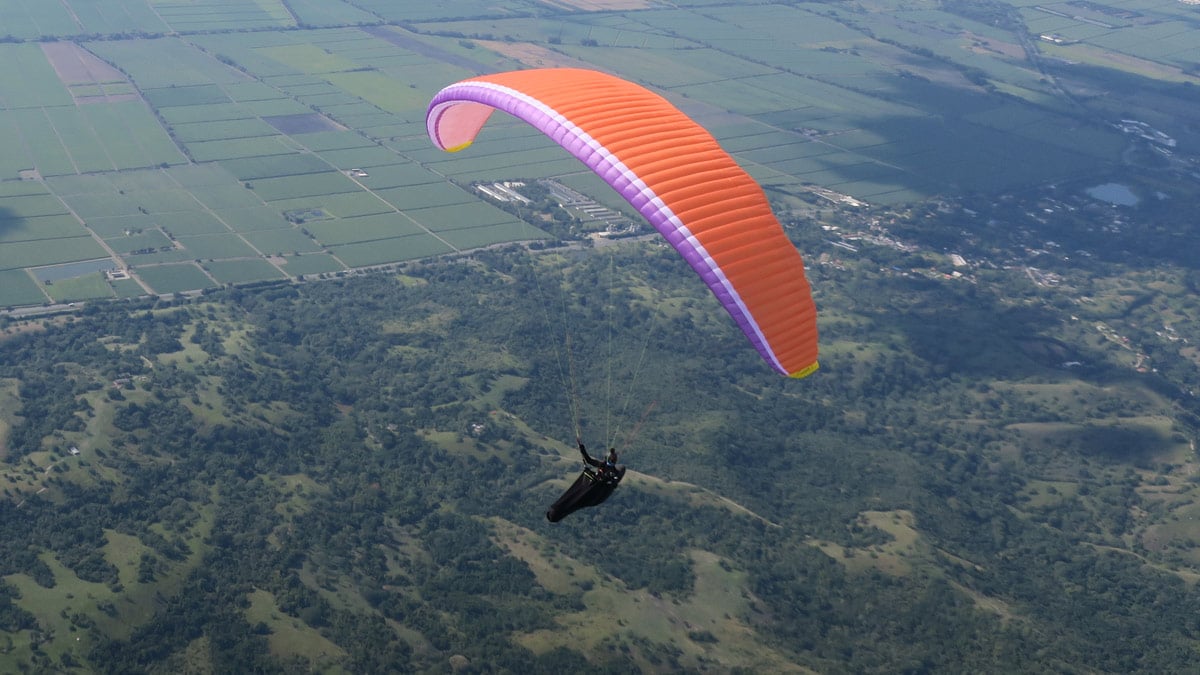
On bar the SECTOR is really impressive, very solid and competitive. It felt like a good speed for its class. Because of the comfortable feeling I was finding myself using the speed regularly and I noticed I was pulling away from the latest high B wings.
The SECTOR I was flying didn’t have the Speedbrake Risers (available as an option) fitted, so controlling with the C risers produced a crease if using them heavily. I used the C risers for small active inputs which allows for course correction.
Nova SECTOR: Stability
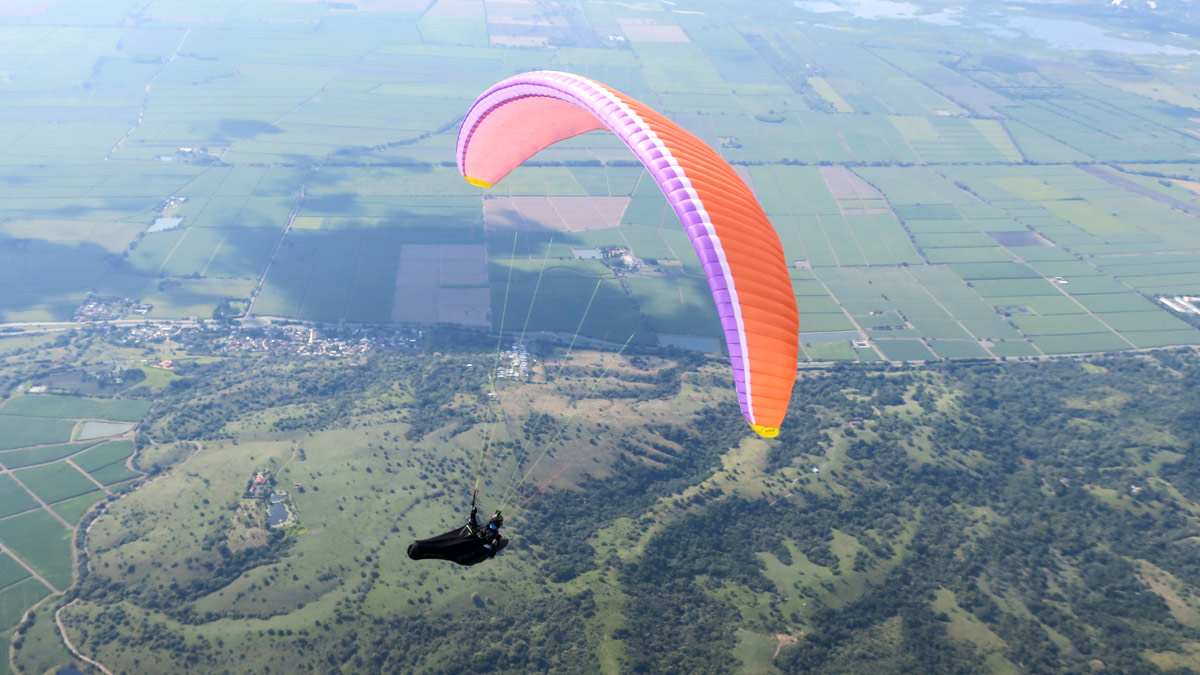
I didn’t do full SIV but tested out the freedom of movement. I was very impressed with it, you can pitch it lots and it generates energy, but then it dampens out. I found it hard to get it to front tuck but at the same time it doesn’t feel too dampened and restricted.
Wing-overs were really fun, the sharp handling produces good energy that is easy to control.
I flew it in a wide range of conditions, including some very turbulent air. In one exciting flight, after scrapping around in broken air for a while I finally found an energetic core of around 4 m/s average. This climb suddenly increased to over 6 m/s and I was fast approaching the clouds, which had that chopped-up sea breeze look to them. Straight-lining, the lift continued and I touched the edge of the cloud, the strong lift continuing for a couple of seconds, and then I got spat out. I assume I encountered some extreme wind shear (well, it felt extreme to me!). The glider, suddenly meeting air going in a different direction (mostly descending), immediately stopped climbing, whilst I, having more mass and therefore inertia, continued upwards for a short while longer. As a result the lines went slack, despite big corrective input. The glider pitched forwards, 'trying' (and failing) to maintain airspeed, lost all pressure and had a sudden, violent full-frontal collapse.
Fortunately I think my input limited how far the wing pitched and collapsed, so I stayed clear of the lines (nowhere near the sail). After a short bout of aerial doggy-paddle, gravity took over again and I dropped back down, catching up with the glider and returning tension to the lines. However the glider had no airspeed, so it was now in a deep stall in washing-machine air. I kept my hands up, ready to catch the dive, waiting for the wing to regain airspeed and fly again, which it quickly did. The dive was asymmetric, but actually not too bad, despite the air, so I managed to check it and keep the wing open, returning to 'normal flight'. Considering the air, I think the wing behaved very well - confirming to me that it is 'easy C' in terms of pilot demands. I am sure that a hotter C, would be significantly more demanding, and less forgiving, in a situation like this.
Nova SECTOR: Relatively speaking

I flew with some good XC pilots on Sigma 10s and Delta 3s (both excellent current mid C wings). It's always hard to tell in active air (conclusions and glide comparisons are often misleading) but having repeatedly climbed and glided with several over a period of a few hours, my impression was that the Sigma 10 had a slight edge in top speed, maybe also glide, over the other two, but it's also a more dynamic wing with slightly higher pilot demands. The Sector seemed to have a slight edge on the Delta 3 in terms of glide and speed; the Delta 3 might have a slight edge in weak, broken lift. It depends on what kind of wing you enjoy; compared to the Delta 3, I prefer the more direct feeling and precise handling of the Sector.
Nova SECTOR: Who’s it for?

The Nova SECTOR is the perfect glider for pilots progressing upwards from the XC Class (high B) who feel their wing is holding them back but they don’t want a hot-ship. It has excellent performance within the C class, and it fits nicely between the MENTOR and TRITON. You might also consider it if you’re currently flying a higher rated glider and want to chill out without losing performance. I had no problem at all keeping up with high C and even D wings.
Find out more about the Nova SECTOR
Thanks to Timm Asprion and Ronald Ten Berge for the images.
Nova SECTOR: Video review
Brought to you by Flybubble
Want to see more? There's no better way to support our efforts than buying from us. We'll ensure you get great service! Choose from our great range AND enable us to produce more content to benefit the freeflight community.

